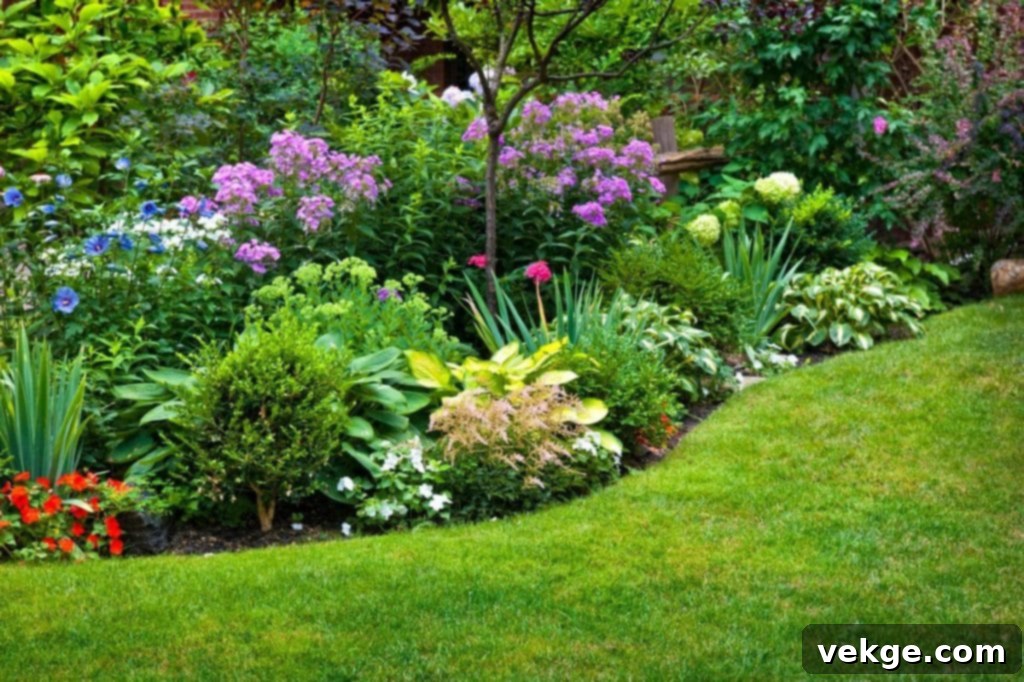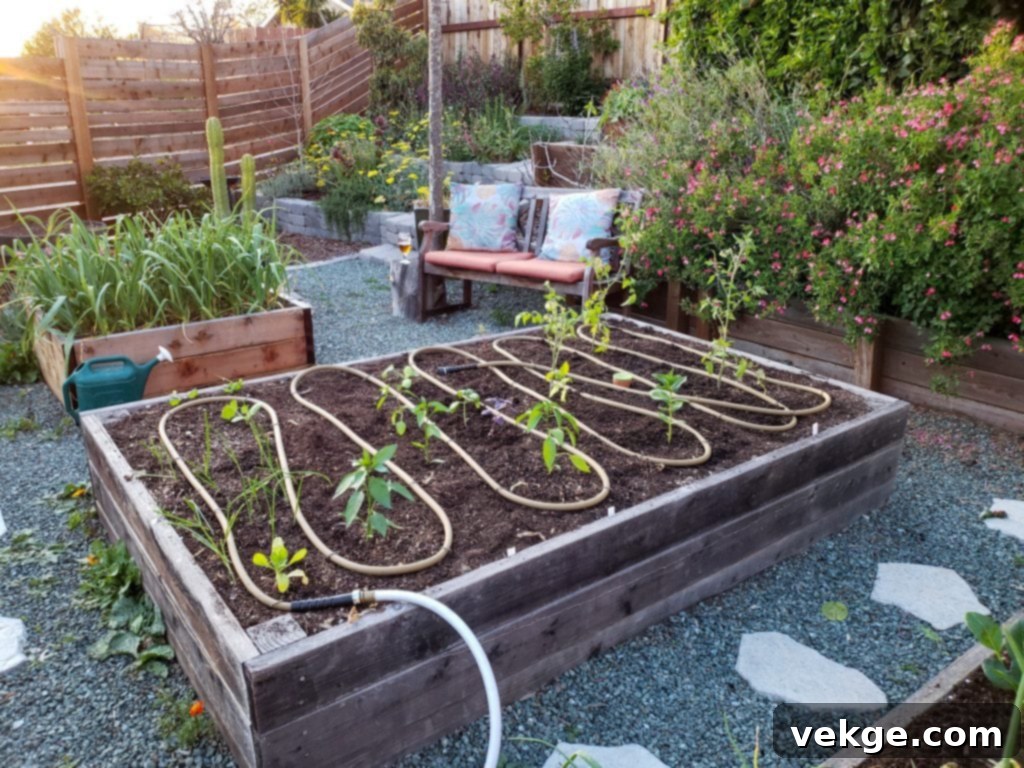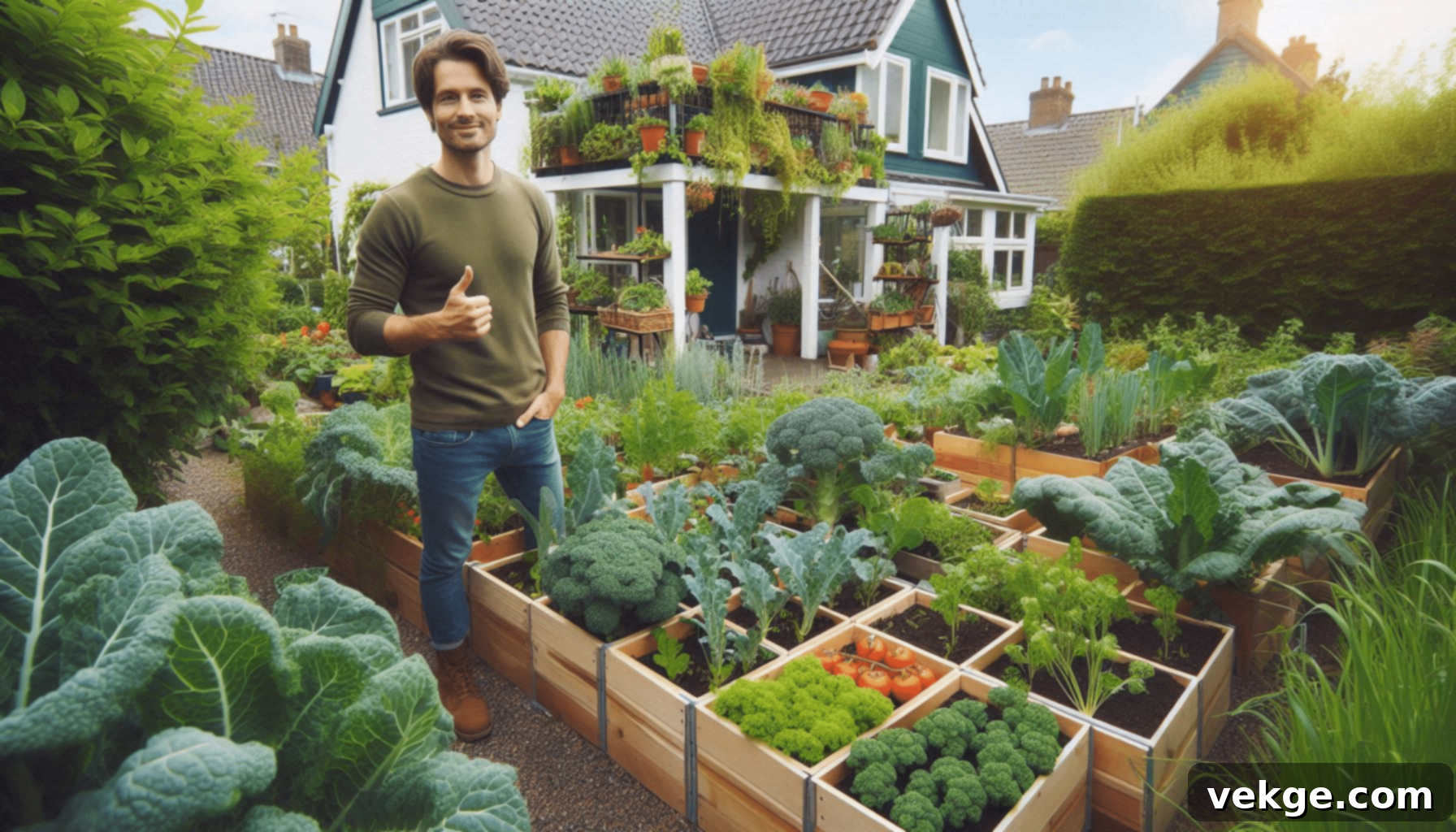Unlock Effortless Beauty: Your Comprehensive Guide to Sustainable Low-Maintenance Gardening
Imagine a garden that almost takes care of itself, a verdant sanctuary where beauty and functionality coexist without demanding constant upkeep. This vision is not a dream but an achievable reality through the principles of sustainable minimalism in gardening. By blending intelligent design choices with modern advancements, you can significantly cut down on the time and effort typically associated with maintaining a lush green space, allowing you to enjoy your garden more and work in it less.
The secret lies in employing smart designs that naturally reduce the need for intensive watering and weeding, coupled with modern technological tools that effortlessly manage everything from soil health to optimal plant growth. This approach transforms gardening from a chore into a truly enjoyable pastime, providing you with a thriving ecosystem that is both visually stunning and environmentally friendly.
Curious how to achieve this perfect balance between a vibrant garden and a relaxed lifestyle? Join us as we explore practical tips, innovative strategies, and lesser-known techniques for cultivating a low-maintenance, yet undeniably stunning garden that reflects your commitment to sustainability and ease.
Choosing the Right Perennial Plants for Lasting Beauty

The foundation of any successful low-maintenance garden begins with plant selection. A garden is, after all, as low-maintenance (or labor-intensive) as the plants grown therein. Perennials are the ultimate choice for a sustainable, low-effort garden because they return year after year, eliminating the need for annual replanting and drastically cutting down on your gardening tasks each spring.
Varieties like fragrant lavender, shade-loving hostas, resilient sedum, cheerful coneflowers, and striking Russian sage are celebrated for their ability to thrive with minimal attention, providing consistent beauty without constant fuss. These plants establish deep root systems that make them incredibly resilient.
Deep-rooted species are particularly beneficial as they often need significantly less watering once established, tapping into deeper soil moisture reserves. Furthermore, drought-tolerant perennials endure summer heat and dry spells effortlessly, making them ideal for water-wise gardening and reducing your reliance on irrigation. Selecting plants that are well-suited to your local climate and soil conditions is a critical first step towards a truly self-sufficient garden.
Beyond their ease of care, perennials also play a vital role in supporting local ecosystems. Their consistent blooms provide a reliable food source for pollinators like bees, butterflies, and hummingbirds, enhancing your garden’s biodiversity and overall health. Understanding these inherent plant characteristics – their resilience, water needs, and ecological contributions – makes it far easier to build a sustainable space that demands less of your time and resources, allowing you to enjoy its beauty year after year.
Integrating Smart Garden Technology for Effortless Management
In a world where there’s literally a tech tool for almost everything, gardens have certainly not been left behind. Integrating smart garden technology is a game-changer for achieving a truly low-maintenance oasis. These innovations take the guesswork out of gardening and automate many routine tasks, freeing up your valuable time.
Smart sensors are at the forefront of this revolution, constantly monitoring crucial environmental factors such as soil moisture levels, sunlight exposure, and ambient temperature. These intelligent devices provide real-time data directly to your smartphone or a central hub, alerting you precisely when your plants need attention. This proactive approach prevents both under-watering and over-watering, ensuring optimal plant health and resource efficiency.
Automated irrigation systems further enhance this efficiency. Connected to smart controllers, these systems can adapt to current weather conditions, seasonal changes, and specific plant needs without any manual adjustments. They ensure that water is delivered precisely when and where it’s needed, minimizing waste and maximizing effectiveness. Options range from simple timers to sophisticated systems that integrate with local weather forecasts to skip watering cycles during rain.
Beyond hardware, garden management software and mobile applications simplify the planning and tracking of plant care schedules. These digital tools can help you identify plants, diagnose pest and disease issues, track planting dates, and even provide tailored care recommendations. Using these integrated tools can significantly reduce the effort needed for growing and managing a garden, making sophisticated plant care accessible to everyone.
By integrating technology into your gardening routine, you stay informed about your garden’s health and environmental factors effortlessly. This technological advantage not only optimizes plant growth and conserves resources but also frees up your time to simply relax and enjoy your thriving green space, rather than constantly tending to it.
Efficient Watering Systems for Sustainable Minimalism

There’s no question that a healthy, productive garden relies heavily on proper watering. In the context of sustainable minimalism, efficient watering systems play a pivotal role in conserving water, reducing labor, and maintaining your garden’s vitality. These systems are designed to deliver water precisely and effectively, minimizing waste and maximizing absorption.
Drip irrigation stands out as a cornerstone of water-efficient gardening. This method minimizes water waste by delivering moisture directly to the plant’s root zone, virtually eliminating evaporation and runoff. It provides a slow, steady supply of water, encouraging deeper root growth and healthier plants. Drip systems can be customized with various emitters to suit individual plant needs, making them incredibly versatile.
Similarly, soaker hoses offer an excellent solution for even water distribution without the runoff issues often associated with traditional sprinklers. These porous hoses weep water along their entire length, delivering moisture directly to the soil where it’s most needed. They are particularly effective for densely planted beds and vegetable rows, ensuring consistent hydration.
To further enhance water efficiency and reduce manual effort, consider these integrated solutions:
- Timed Irrigation Controllers: These devices automate watering schedules, ensuring plants receive water at optimal times, such as early morning, to reduce evaporation. Advanced controllers can even adapt to changing weather conditions, pausing during rain events.
- Rain Barrels and Rainwater Harvesting: Collecting and reusing natural precipitation is an incredibly eco-friendly and cost-effective watering method. Rain barrels can be easily attached to gutter downspouts, providing a free, chemical-free water source for your garden.
- Soil Moisture Sensors: While mentioned with smart tech, these sensors are fundamental to any efficient watering system. They prevent overwatering by only activating irrigation when the soil moisture drops below a predetermined level, saving water and preventing root rot.
- Strategic Mulching: Although not a watering system itself, applying a layer of organic mulch (like wood chips, straw, or compost) around plants is crucial. Mulch significantly reduces soil moisture evaporation, suppresses weeds that compete for water, and helps regulate soil temperature, thereby reducing your overall watering needs.
Integrating these systems ensures efficient use of precious water resources while simultaneously maintaining your garden’s health and appearance with minimal intervention. This thoughtful approach allows you to enjoy lush, vibrant growth with significantly less effort and a reduced environmental footprint, embodying the true spirit of sustainable minimalism.
Utilizing Native Plants to Drastically Reduce Maintenance
One of the most powerful strategies for creating a truly low-maintenance garden is to embrace native plants. These local flora naturally thrive in their specific environment, making them perfectly suited for a hands-off gardening approach. Because they have evolved alongside the local soil, climate, and rainfall patterns, native species require significantly less intervention from gardeners.
The adaptability of native plants means they rarely need supplemental watering (once established), fertilizer, or soil amendments. They are perfectly content with what nature provides. This resilience also extends to their natural defenses against local pests and diseases. Unlike exotic or non-native species that might struggle against indigenous threats, native plants often have built-in immunities or deterrents, cutting down on the need for chemical interventions like pesticides or fungicides.
Furthermore, native plants play a critical role in supporting the local ecosystem. They provide essential food and habitat for native wildlife, including birds, beneficial insects, and other pollinators, fostering a harmonious and balanced environment. This creates a self-sustaining ecosystem that practically takes care of itself, reducing your workload while still being incredibly visually appealing. By choosing native plants, you’re not just creating a beautiful garden; you’re actively contributing to local biodiversity and ecological health, making your garden a true extension of the natural landscape.
Designing with Low-Maintenance Ground Covers for Weed Suppression
Another incredibly helpful and aesthetically pleasing way to establish a garden with minimal maintenance involves the strategic use of ground covers. These plants are specifically chosen for their ability to spread quickly and effectively, forming a dense carpet that covers the soil and, crucially, prevents weed growth. Varieties like creeping thyme, clover, ajuga, sedum, and vinca minor are excellent choices for this purpose.
By forming a living mulch, ground covers naturally suppress weeds by depriving them of sunlight and space. This dramatically reduces the need for manual weeding and frequent mulching, making garden upkeep a breeze. Instead of spending hours pulling weeds or constantly refreshing mulch, you can simply enjoy the continuous green texture these plants provide.
Beyond weed suppression, many ground covers also actively improve soil health. Their dense foliage helps to retain soil moisture, reducing the need for irrigation, especially during dry periods. As they grow and die back, they contribute organic matter to the soil, enhancing its structure and fertility over time. They can also prevent soil erosion on slopes or in areas prone to runoff. This multifaceted approach results in a lush, verdant garden that practically takes care of itself, offering continuous beauty with minimal effort.
Companion Planting Strategies for Healthier, More Resilient Gardens
Ever heard of plants that not only coexist but actually help each other thrive? This fascinating concept is known as companion planting, a time-honored organic gardening strategy that leverages natural interactions between different plant species. By carefully selecting and grouping plants, you can enhance growth, naturally deter pests, attract beneficial insects, and even improve soil fertility, creating a self-sustaining and resilient garden ecosystem.
Companion planting is built on the understanding that certain plant combinations create synergistic relationships, benefiting one another in various ways:
For example, consider these effective pairings:
- Tomatoes and Basil: Basil is known to repel various insects that target tomatoes, such as tomato hornworms and flies, while some gardeners also believe it enhances the flavor of tomatoes.
- Carrots and Onions: Onions and other alliums can ward off the carrot rust fly, while carrots can help deter onion maggots. Their contrasting root structures also utilize different soil depths, avoiding competition.
- Corn, Beans, and Squash (The Three Sisters): This classic Native American planting strategy is a prime example of synergy. Corn provides a stalk for beans to climb, beans fix nitrogen in the soil (benefiting the heavy-feeding corn and squash), and squash leaves provide ground cover, suppressing weeds and keeping the soil moist.
- Marigolds and Vegetables: Certain varieties of marigolds (especially French marigolds) release compounds from their roots that deter nematodes and other harmful soil-borne pests from nearby vegetables. They also attract beneficial insects.
- Borage and Tomatoes/Strawberries: Borage is said to deter tomato hornworms and improve the flavor of tomatoes. It’s also an excellent attractor for bees, boosting pollination for various crops.
- Nasturtiums as Trap Crops: These vibrant flowers can act as a “trap crop,” attracting aphids away from more desirable vegetables. They are also edible themselves.
These natural partnerships significantly reduce reliance on synthetic chemicals, fostering a healthier environment for your plants, the soil, and local wildlife. By leveraging the inherent relationships between plants, you can enjoy more robust growth, fewer pest problems, and a more productive garden with considerably less effort. It’s an intelligent, organic way to cultivate a thriving garden that practically manages itself.
Embracing sustainable minimalism in gardening fundamentally means achieving more beauty with less work. By thoughtfully integrating perennial plants that return year after year, leveraging smart garden technology for automated care, and implementing efficient watering systems, you can significantly boost your garden’s health and appearance while conserving vital resources. Further simplifying upkeep through the utilization of resilient native species and ground covers creates a natural barrier against weeds and environmental stresses.
The journey to a truly low-maintenance garden is about making intelligent choices that work with nature, rather than against it. By adopting these comprehensive strategies – from plant selection and technological integration to ecological design principles – you can cultivate a thriving, beautiful oasis that demands minimal effort but provides maximum enjoyment. Your sustainable garden will not only be a source of personal satisfaction but also a testament to eco-conscious living.
